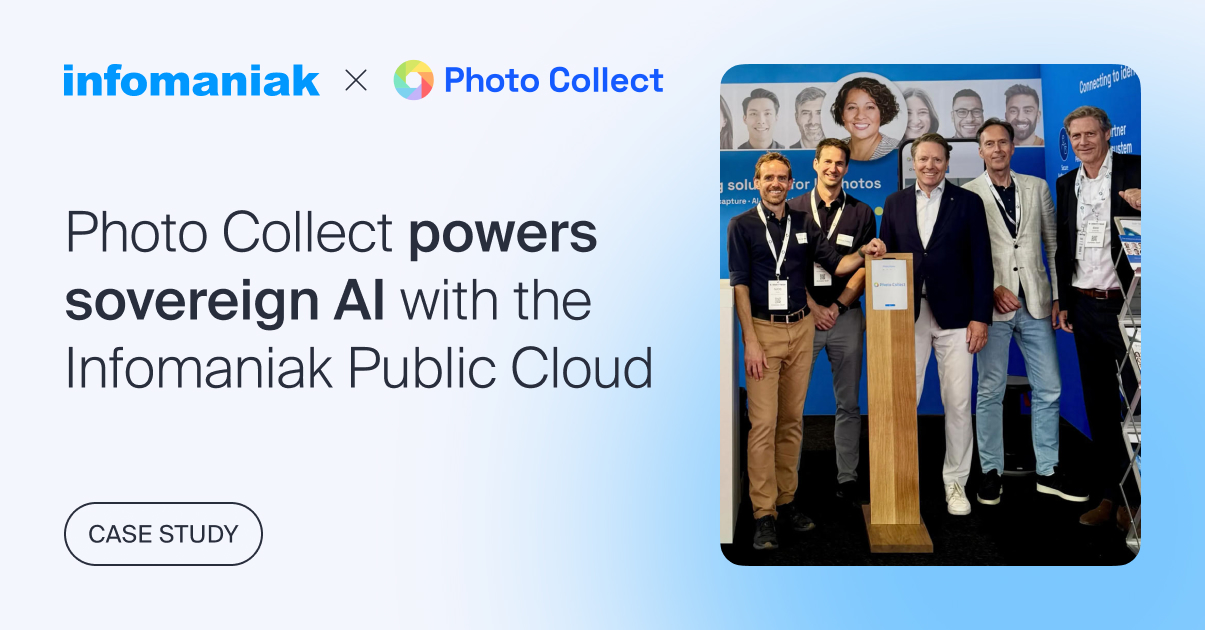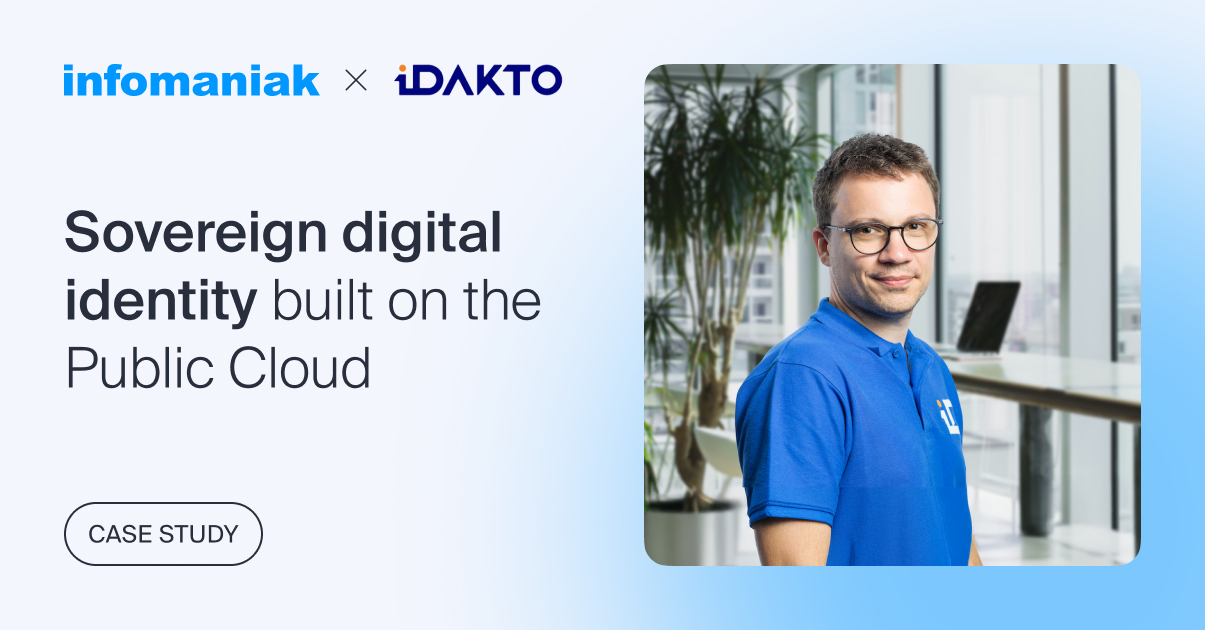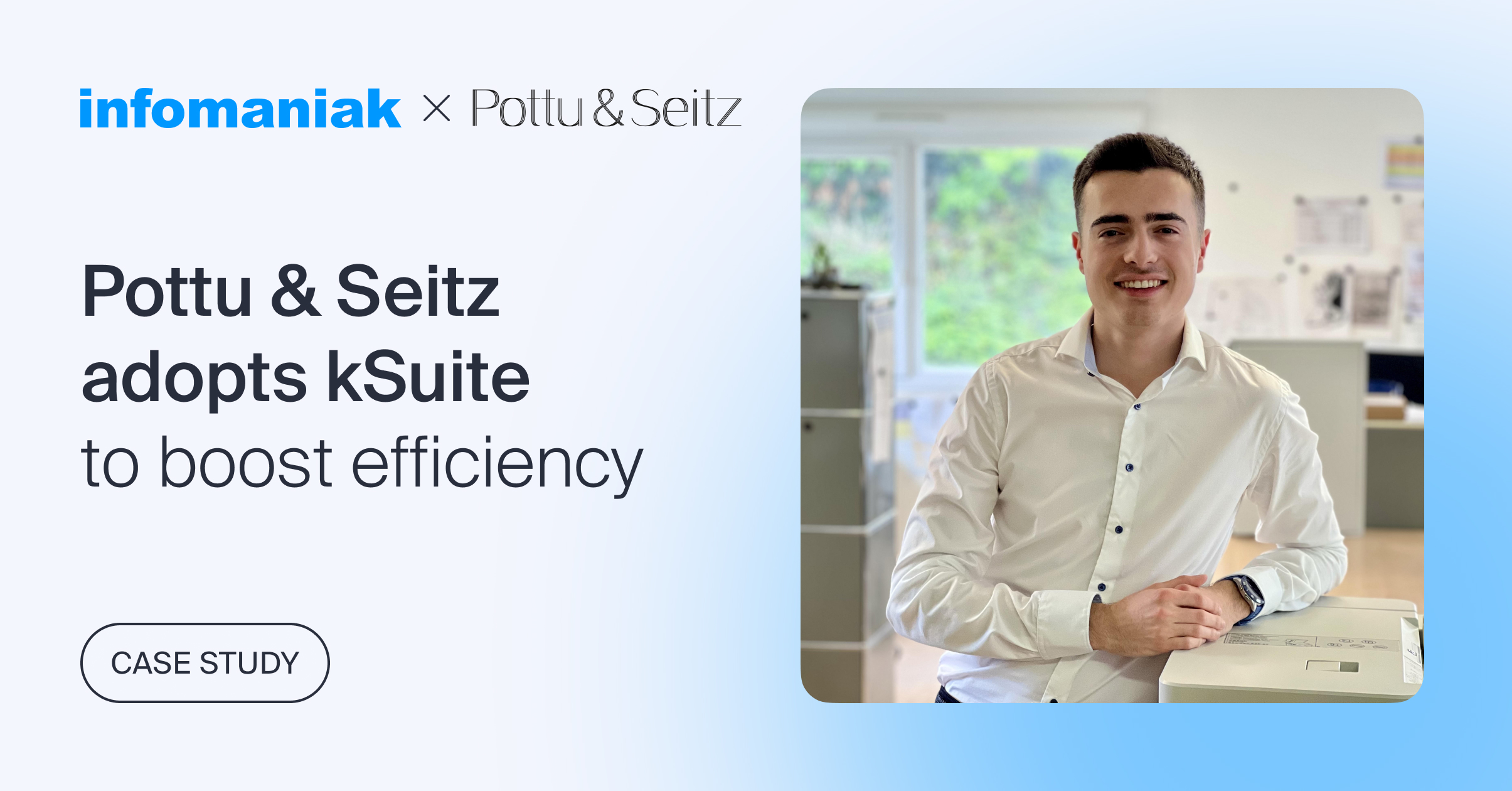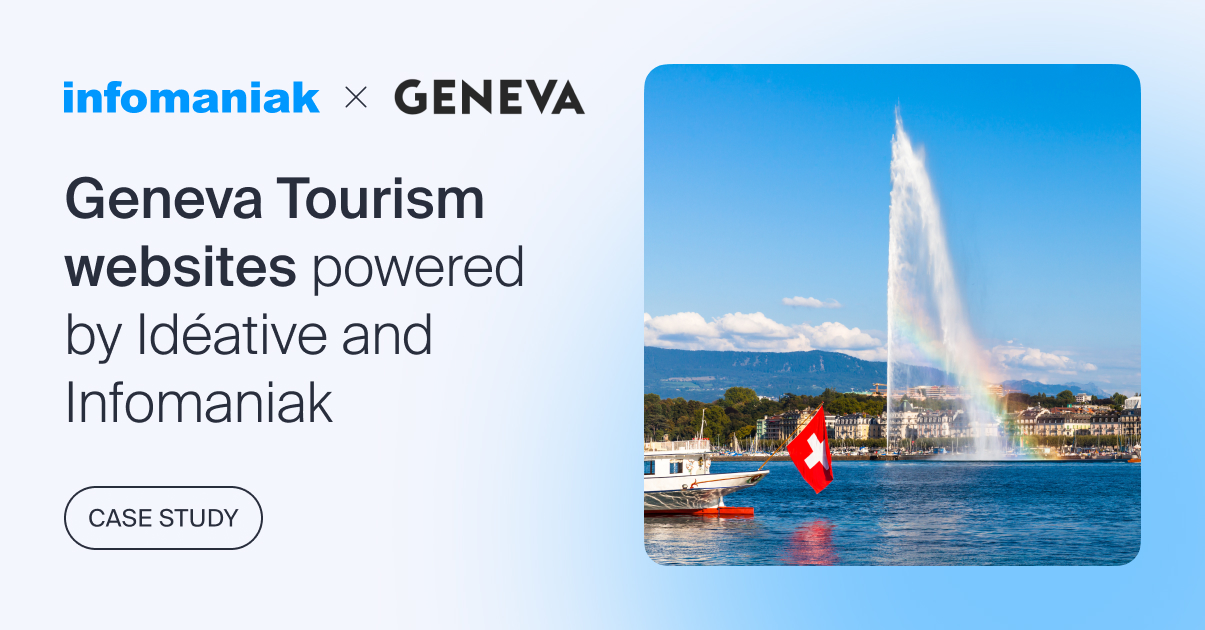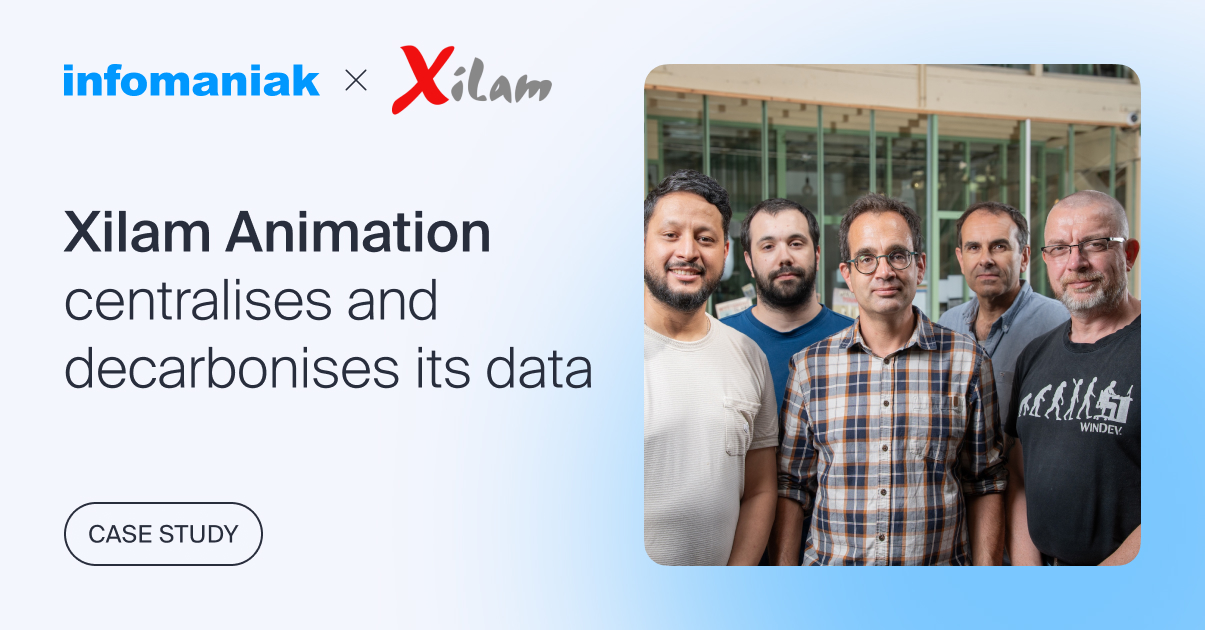Radio-télévision belge de la Communauté française (RTBF) has chosen Infomaniak to develop its high-availability infrastructure. This strategic collaboration has enabled RTBF’s websites to evolve since 2010 to reach an audience of more than 2 million Internet users per month, 10% of whom are located abroad. The profound transformation of the media has made it necessary to adapt the infrastructure regularly to new consumption patterns. By winning several calls for tender, Infomaniak has enabled RTBF to remain at the cutting edge of technology thanks to an approach that prioritises cost optimisation and independence.
Supporting the expansion of RTBF’s web services
The starting point of the project is the autonomy and high availability of the IT infrastructure. As a national public media outlet, RTBF must ensure the robustness, resilience and scalability of its digital platform. In Belgium, RTBF is a pillar of information and culture. It radiates throughout the French-speaking world by broadcasting its programmes around the world, in particular through its digital platforms.
To create its IT infrastructure, RTBF has drawn up very demanding specifications with 100% uptime to ensure high availability and full ownership of the code linked to the infrastructure in order to guarantee the independence of its web services.
To achieve these objectives, RTBF must rely on a strong partner that it selects in regular calls for tender (European public procurement).
The challenge: to respond to the web explosion and enable technological developments from 2010 to 2024
- To build the RTBF web infrastructure for the Cryo independent software framework (CMS).
- To ensure high availability of RTBF web services.
- To provide technical support concerning the full scope of the domain: architectural advice, debugging related to applications, migrations, maintenance and development of the infrastructure in general.
- To develop the RTBF infrastructure from bare metal machines and provide the appropriate support to enable new technologies to be adopted over the years.
Choosing Infomaniak
According to Luc Thunissen, Head of Applications and Products – RTBF: “Infomaniak is the only European service provider to come close to RTBF’s requirements in its regular calls for tender between 2010 and 2024, aimed at upgrading its infrastructure.”
- Competitiveness: Infomaniak’s global prices are systematically far more competitive than other providers.
- Reliability: the infrastructure guarantees an uptime rate of 99.99% through SLA (service level agreement) clauses.
- Scalability: Infomaniak provides tailor-made services enabling infrastructure technology to progress. The infrastructure as code (its ownership) remains within RTBF.
- Tailor-made support: the scope of action goes beyond that of a simple infrastructure provider that checks that all its lights are green. Infomaniak’s engineers analyse the code pushed by the RTBF team and recommend solutions or optimisations on a case-by-case basis.
- Dedicated 24/7 support: RTBF’s engineers collaborate directly with those of Infomaniak and proactively exchange information and recommendations to optimise the use of the infrastructure.
Infrastructure implementation: the 3 key steps
2010 – Creation of a managed bare metal infrastructure
In 2009, the RTBF infrastructure in place had its limitations: 4 Drupal machines, 1 DB machine and 2 front-ends, handling both PHP scripts and static assets, which reduced performance. To manage the increase in traffic, RTBF’s new team of engineers developed “Cryo,” a tailor-made CMS optimising article caching and editing by integrating data external to Drupal.
Between 2010 and 2015, Infomaniak provided the IT infrastructure for this new framework. It was a public contract with a renewal of the specifications. In this phase, the infrastructure consisted entirely of physical machines managed by Infomaniak. It guaranteed high availability with 99.99% uptime (very rare at the time). The team separated the functions by creating a dedicated “static farm” (NGINX) specialising in the rapid distribution of static files. In parallel, separate (Apache) servers were configured specifically to run PHP scripts. This separation improved the overall performance of the system by optimising each type of server. The infrastructure was strengthened with a redundant MySQL cluster to improve the availability and stability of the database, migrated first to Maria DB (then Maria DB Galera). The number of front-end machines was increased and a load balancer was set up to distribute the load between the specialised servers.
2015 – Infrastructure hybridisation
To support the organic growth of services, new machines purchased for RTBF were regularly added to the infrastructure and managed by Infomaniak. To increase scalability, the infrastructure evolved towards a hybrid architecture. Infomaniak implemented a strategy to recycle the physical machines provided for the initial RTBF infrastructure. The engineers turned some of these machines into small hypervisors to generate VMs and virtualised nodes that were transferred to the new infrastructure.
“The result was a first step towards virtualisation, offering enhanced operational efficiency and greater flexibility. This step towards virtualisation opened up new possibilities for the future of the infrastructure: moving to orchestration for future RTBF application developments.” Michael Simonini, DevOps Engineer – RTBF
2020 – Managed private cloud: containerisation and micro-services architecture
RTBF engineers became aware of the potential of a fully virtualised infrastructure and developed an “API-driven” vision that centralised data flows such as Belga news or weather services. A multi-services API was developed and used in particular by the AUVIO website, which brings together the entire audio-visual offering of RTBF. The API was at the heart of the entire mobile application system, smart TV, PlayStation, Tizen, Xbox, etc.
Having been progressively virtualised, the infrastructure was ready to move to the orchestration stage. Infomaniak initially provided VM clusters with the Docker Swarm orchestration module, then managed Kubernetes clusters. RTBF’s tailor-made infrastructure became a managed Private Cloud.
The databases managed by RTBF remained in a Maria DB Galera cluster of physical machines managed by Infomaniak.
In addition, since 2022, RTBF’s engineers have been using Infomaniak’s Public Cloud S3 storage.
Results
RTBF’s cloud infrastructure is managed and maintained by Infomaniak. It serves 2.2 million visitors per month with peaks of up to 7 million visitors (Television News, Euro Matches, Demain nous appartient, Ici tout commence, Formula 1, Tour de France, Moto GP, films, Olympic Games, etc.).
RTBF benefits not only from on-demand resources, but also from Infomaniak’s experience in terms of high availability:
“The managed private cloud model is perfectly suited to RTBF, as we are not DevOps specialists. With the evolution of products such as kSuite, Infomaniak already has experience of scaling its own infrastructure with millions of users. Ultimately, we have the resources we need to develop RTBF’s services without ever having to handle infrastructure management, which is not our business.” Michael Simonini, DevOps Engineer – RTBF
RTBF benefits from advice at all times: RTBF works closely with Infomaniak’s production teams via dedicated support. Even though it is responsible for what it deploys on its infrastructure, Infomaniak makes its engineers available to support certain deployment choices, track abnormal machine behaviour or designate processes for rollback if necessary. Infomaniak also brings its experience in optimising code linked to the infrastructure.
A Kubernetes service managed since 2020: resource orchestration makes it possible to implement an on-demand Kubernetes service on the RTBF infrastructure while maintaining independent control. This gives RTBF development capabilities at the best market standards, in particular to support the transition to microservices/multi-services with the API marketplace, for example. This includes the RTBF info app, the AUVIO platform and the CRYO CMS used by all journalists.
More
Euria: the free, sovereign AI assistant to no longer depend on the American giants
Tuesday December 9th, 2025
Photo Collect guarantees its digital sovereignty with Infomaniak’s Public Cloud
Friday October 31st, 2025
Case study: iDAKTO develops its digital identity solutions with Infomaniak’s Public Cloud
Friday October 17th, 2025
Case study: the agency Idéative chooses Infomaniak to power the Geneva Tourism sites
Tuesday August 5th, 2025

 Français
Français Deutsch
Deutsch Italiano
Italiano Español
Español
